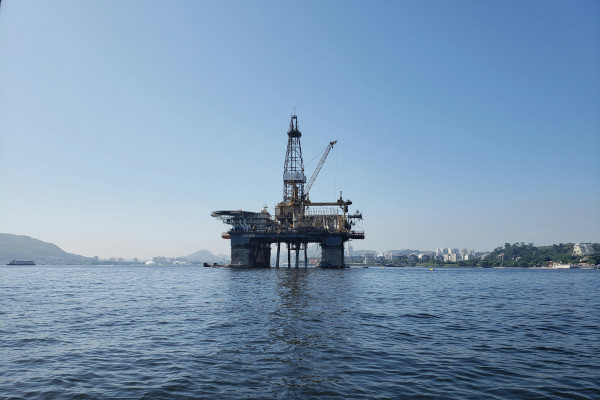Global oil demand continues to grow

Oil has long played a pivotal role in powering the global economy, fueling everything from cars and trucks to factories and power grid. While climate change has spurred a global push toward renewable energy, oil consumption is still on the rise. Some analysts believe that peak oil demand will happen in not too distant future, whereas others predict it isn't even on the horizon at all.
Trends in oil demand
Global oil demand has generally been on an upward trajectory over the past few decades. According to the Organization of the Petroleum Exporting Countries (OPEC), demand reached approximately 100 million barrels per day (mb/d) in 2019. The outbreak of the COVID-19 pandemic in 2020 led to the first decline since the financial crisis in 2008, with demand dropping by about 9% to 91 mb/d due to widespread lockdowns and reduced travel.
In 2021 and 2022 oil demand rebounded significantly as economies began to recover. By 2023, demand had risen to a new all-time high of 102.2 million barrels per day, marking an increase of about 2% compared to pre-pandemic levels.
The main drivers of the global oil appetite are multifaceted, involving economic growth, population dynamics, as well as sector-specific demands particularly in transportation and petrochemicals. IEA estimates that global energy demand will continue to increase in the next decades, and with a continued reliance on fossil fuels to cover part of that demand. As a result both OPEC, the IEA and the oil industry itself expect global oil demand to continue to raise, albeit at a slower pace in the coming years.
Source: OPEC annual reports 2001-2023
Oil supply expected to keep up with demand
Despite concerns about dwindling resources, oil production is anticipated to keep pace with the growing global demand in the foreseeable future. Advances in extraction technology, including enhanced oil recovery (EOR) methods, hydraulic fracturing, and deepwater drilling, have unlocked previously inaccessible reserves. This has led to a steady increase in production capacity, allowing producers to tap into new oil fields and maximize the output of existing ones. As a result many analysts currently see the risk of a future oversupply of oil as higher than the risk of oil production becoming a constraint on consumption.
Reduced footprint in the energy mix
Oil's dominance in the global energy mix has been steadily diminishing, falling from a 46% share in 1973 to 33% by 2023. The IEA forecasts that this figure will drop further to 25% by 2028, as renewable energy technologies rapidly expand. The decline in market share is however not a signal that oil demand is going down, but instead that other energy sources are absorbing more of the increasing energy consumption.
Source: IEA website
Current peak demand predictions
Predictions for peak oil demand vary, with near-term forecasts suggesting it could peak before 2030. British Petroleum (BP) anticipates a peak as early as 2025, while the IEA projects it around 2029, and McKinsey expects it to occur just before 2030. Mid-term predictions place the peak between 2030 and 2035, with Vitol forecasting in to happen in early 2030s and Goldman Sachs predicting it will take place in 2034. Long-term forecasts include those who estimate peak oil production beyond 2035. OPEC is the most significant organization in this category. They see no peak demand on the horizon and instead predict that it will continue to grow well into the 2050s and beyond.
Possible scenarios post peak demand
Some analysts predict a sharp decline in oil consumption after peak demand, particularly if substantial breakthroughs in renewable technologies occur and widespread adoption follows. This scenario could be accelerated by strong climate policies, carbon pricing, and investments in alternative energy, resulting in a swift transition away from oil. Conversely, other analysts believe that oil demand may plateau at a lower level for an extended period. In this scenario, while overall consumption might decline gradually, certain sectors - like aviation and shipping - could continue to rely heavily on oil for the foreseeable future. This "sticky demand" phenomenon suggests that oil will remain integral to specific industries, leading to a slower decline.
Ultimately the fate of future oil consumption will depend on various influences, including transition to renewable energy sources, technological innovation as well as economic and geopolitical factors.
Reflections and outlook
History has shown that peak oil demand has been difficult to predict. While the future is clearly leaning green, oil’s grip is still remarkably strong because it is so deeply woven into the infrastructure of modern economies. Governments may set lofty goals for renewable energy, but high oil consumption will likely persist as long as it remains cheaper and more reliable than the alternatives.